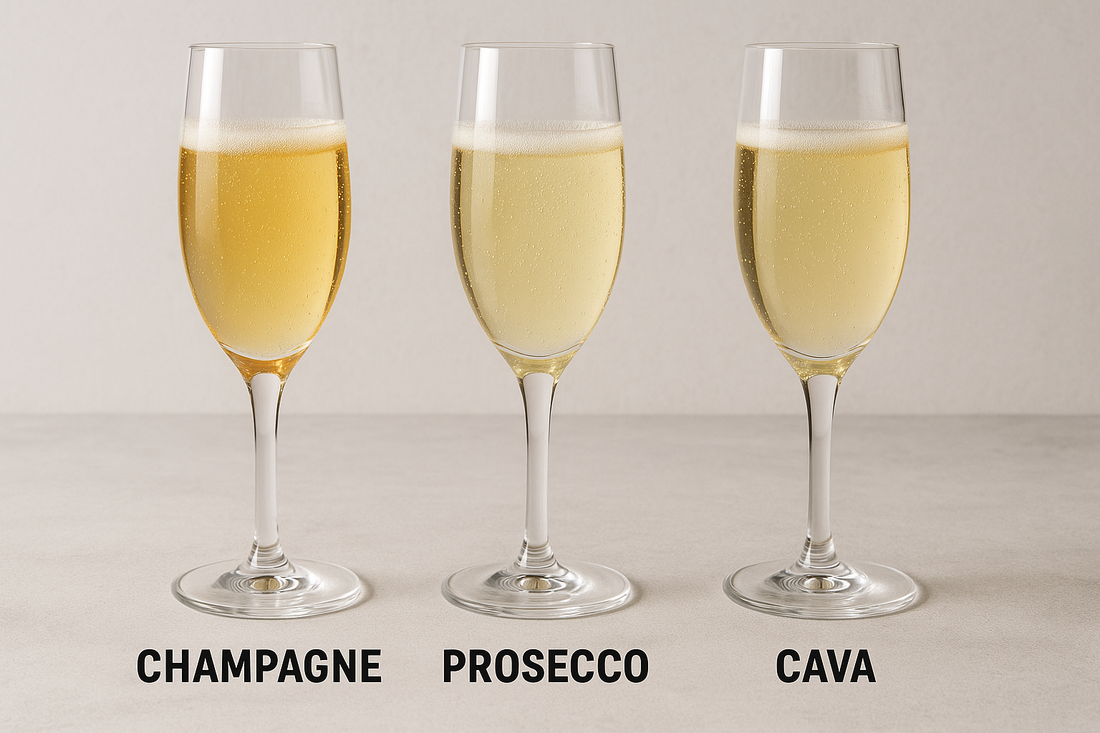
Champagne vs. Sparkling Wine: What’s the Real Difference?
Share
Introduction
Sparkling wines have captivated wine lovers for centuries with their effervescence, celebratory nature, and refreshing character. But not all sparkling wines are created equal. Among them, Champagne stands out as a symbol of luxury and tradition. Yet, many wonder: what exactly differentiates Champagne from other sparkling wines like Prosecco, Cava, or sparkling wines from the New World? As a sommelier with extensive experience in sparkling wines, I will guide you through the nuances that make Champagne unique and explain how other sparkling wines compare.
What Is Champagne?
Champagne is a sparkling wine that comes exclusively from the Champagne region of France, located northeast of Paris. It follows strict regulations that govern its production, grape varieties, and labeling.
- Grape Varieties: Primarily Chardonnay, Pinot Noir, and Pinot Meunier.
- Production Method: Champagne is made using the traditional method (Méthode Champenoise), where the secondary fermentation occurs inside the bottle, creating natural bubbles.
- Aging Requirements: Champagne must age on its lees (dead yeast cells) for a minimum of 15 months (non-vintage) or 36 months (vintage), contributing to its complexity and creaminess.
What Defines Other Sparkling Wines?
Other sparkling wines, such as Prosecco (Italy), Cava (Spain), and sparkling wines from the USA, Australia, or South America, differ in production, grape varieties, and sometimes quality.
- Prosecco: Made mainly from Glera grapes using the Charmat method, where secondary fermentation happens in large tanks. This results in lighter, fruitier bubbles and a more affordable price point.
- Cava: Produced primarily in Catalonia, Spain, using the traditional method but with local grapes like Macabeo, Parellada, and Xarel·lo. It offers a balance of freshness and complexity.
- New World Sparkling Wines: Vary widely in style but often employ the traditional method. They can be innovative and diverse, offering value and unique regional characteristics.
Key Differences Between Champagne and Other Sparkling Wines
|
Aspect |
Champagne |
Other Sparkling Wines |
|
Region |
Champagne, France |
Various (Italy, Spain, USA) |
|
Grapes |
Chardonnay, Pinot Noir, Pinot Meunier |
Varies by region and style |
|
Production Method |
Traditional (bottle fermentation) |
Traditional or Charmat |
|
Aging |
Minimum 15–36 months on lees |
Varies, often shorter aging |
|
Flavor Profile |
Complex, toasty, yeasty, creamy |
Fruity, fresh, sometimes floral |
Why Champagne Commands a Premium Price
The meticulous production process, strict regulations, and prestige of Champagne contribute to its higher price. The labor-intensive traditional method, combined with long aging, yields bubbles with finer texture and wines with layered complexity.
How to Enjoy Champagne and Other Sparkling Wines
- Serve Champagne chilled between 8-10°C (46-50°F) in a tulip-shaped glass to preserve bubbles and concentrate aromas.
- Pair Champagne with oysters, caviar, light cheeses, and even fried foods to contrast its acidity and effervescence.
- Explore other sparkling wines for everyday enjoyment or when looking for budget-friendly options without compromising fun and flavor.
Conclusion
Champagne is a distinct and highly regarded sparkling wine with unique production methods and regional identity. While other sparkling wines offer wonderful variety and accessibility, understanding the differences enriches your appreciation and allows you to choose the perfect sparkling wine for every occasion.

